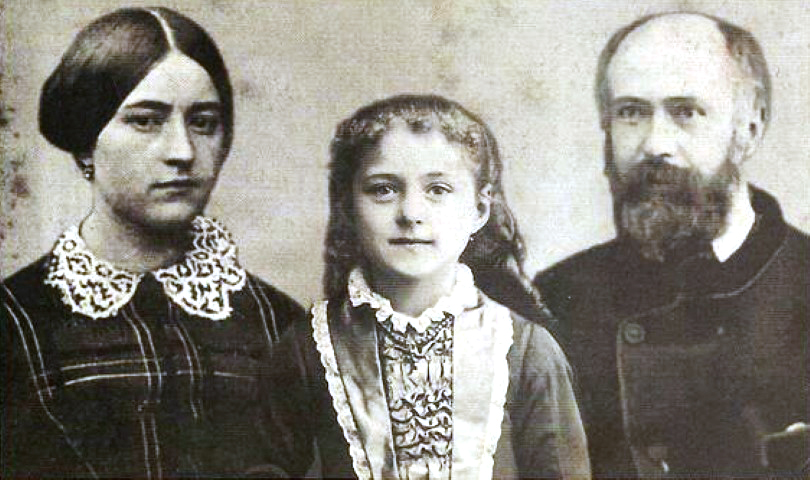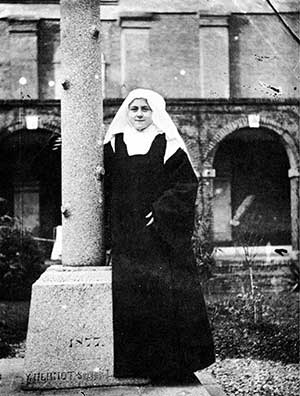Pilgrimage of St Thérèse of Lisieux and her parents to visit the diocese
January 14, 2020

 The relics of St Thérèse of Lisieux and her parents, St Louis and St Marie-Azelie (Zelie), will be taken through a number of dioceses early in 2020, commencing in the Diocese of Wollongong on 23 January in Varroville before returning to the diocese on 18 March.
The relics of St Thérèse of Lisieux and her parents, St Louis and St Marie-Azelie (Zelie), will be taken through a number of dioceses early in 2020, commencing in the Diocese of Wollongong on 23 January in Varroville before returning to the diocese on 18 March.
In light of the current situation concerning the novel coronavirus (COVID-19), the itinerary for the Diocese of Wollongong has been revised to only two locations: St Columbkille’s Catholic Church, Corrimal and the Shrine of Our Lady of Mercy, Penrose Park. See below for the revised itinerary.
Please note, due to the changing nature surrounding government and Church directives in relation to the management of the risk of the coronavirus, the below itinerary is subject to change. Please refer back to this page and/or contact the diocesan director of Catholic Mission, David Harrison on 0449 716 363, or Corrimal Parish and Penrose Park to confirm details on the day.
For those planning to attend, please note the following:
- Individuals should consider their own health, including any potential to infect others with a contagious disease, before attending any event associated with the pilgrimage of the relics.
- For abundant caution, people are not to touch (except by touching with a holy card) or kiss the reliquaries.
- Attendance numbers will be managed on the day to assure that they are within the limits prescribed by government and Church directives.
- Those attending should practice good hygiene (cover mouths and noses when sneezing, coughing etc), refrain from touching their face or mouth, and refrain from shaking hands with others.
- Those attending should maintain a distance of 1.5 metres between themselves and other people where possible.
- Those attending must immediately isolate themselves if they become unwell and seek medical help.
Revised pilgrimage itinerary
Date |
Place |
Times and event details |
| Wed 18 March | CORRIMAL St Columbkille’s Church 99 Princes Hwy |
10:30am Arrival and veneration 10:00pm Close |
| Thurs 19 March | CORRIMAL St Columbkille’s Church 99 Princes Hwy |
8:00am Veneration 5:00pm Adoration 6:00pm Mass followed by veneration 10:00pm Close |
| Fri 20 March | CORRIMAL St Columbkille’s Church 99 Princes Hwy |
8:00am Veneration 9:30am Mass followed by all night veneration |
| Sat 21 March | CORRIMAL St Columbkille’s Church 99 Princes Hwy |
8:00am Veneration 10:00pm Close |
| Sun 22 March | CORRIMAL St Columbkille’s Church 99 Princes Hwy |
8:00am Veneration 10:00pm Close |
| Mon 23 March | PENROSE PARK Shrine of Our Lady of Mercy 120 Hanging Rock Rd |
12:00pm Arrival and veneration 7:00pm Close |
| Tues 24 March to Sun 29 March | PENROSE PARK Shrine of Our Lady of Mercy 120 Hanging Rock Rd |
8:00am Veneration 7:00pm Close |
| Mon 30 March | PENROSE PARK Shrine of Our Lady of Mercy 120 Hanging Rock Rd |
8:00am Veneration 10:00am Depart |
The pilgrimage is being coordinated by Catholic Mission and InvoCare who will be using the opportunity to raise funds for the Vinnies Bushfire Appeal during the pilgrimage. Fr Brian Lucas, national director of Catholic Mission, says the unique circumstances call for contingency. “We have many supporters in badly affected dioceses across Australia and it is incumbent on us to offer a missionary response and to enable those who want to prioritise their friends, families and fellow Australians affected by these devastating bushfires to do so.”
St Thérèse is widely known and loved for her “little way” of spiritual childhood. Born in 1873, she entered the Discalced Carmelite order at age 15, died at the age of 24 and was canonised in 1925. Her parents, Louis and Zélie, were the first spouses to be canonised as a couple in 2015.
Bishop Gregory Homeming OCD has written a beautiful piece on the practise of venerating relics which we have included below:
 Many people wonder why the Church persists in what seems to be a mediaeval piety, an archaic practice. Why tour the remains of saints and make them available for the veneration of the faithful? Is this an outdated superstition?
Many people wonder why the Church persists in what seems to be a mediaeval piety, an archaic practice. Why tour the remains of saints and make them available for the veneration of the faithful? Is this an outdated superstition?
Despite the scenes of intense religious devotion around relics, there is certainly nothing magical or talisman like about the relics of saints. Of themselves, relics are not holy. It is more correct to say, they are the remains of a holy person, a saint, and on account of their connection to that holy person are revered.
In Australia, we are used to caring for and respecting sacred sites. A place may be sacred for a number of reasons. It may be a place of spiritual significance to a people who identify with and are defined by that place; as is the case with many indigenous Australians. It may be a place where an important event took place and now is part of the national identity, such as Gallipoli. It may be a building in which over hundreds of years people have prayed and worshiped, such as a church or cathedral.
We all have souvenirs of people we have loved, insignificant items of little value, but to us they are treasured gems which move us to remember a loved one or an event. When the item attaches to a person it can bring to mind the attributes and goodness of the person. In some cases it can even encourage us to live according to higher values. The relics of saints fall into this category. Relics are physical remains which connect us with the goodness and holiness of the saint. They remind us of the saint and through the saint move us to live better lives.
The saints who are “visiting” Australia are a mother, a father and their daughter. St Louis and St Zelie are the only married couple to have been canonised, and they have a daughter who was called by Pope St Pius X, the greatest saint of the modern times. St Therese, who died in 1897, was a woman of precocious virtue and prayer. She says, “For me, prayer is a surge of the heart; it is a simple look turned toward heaven, it is a cry of recognition and of love, embracing both trial and joy.” She shows us that holiness is simple and hidden, it does not seek recognition but turning away from self to God, it makes within the human heart a place for Jesus.
As is the case with Jesus, holiness and goodness does not exist in a vacuum. It has a context. In Jesus’ case the context was the holy family. Extraordinary goodness does not exist in isolation. If you see a good child, you can generally presume that this goodness comes through the parents. Jesus was taught by Mary and St Joseph. St Therese is the daughter of holiness. The Church recognised that goodness is caught, and so investigated her parents, and found two saints.
These three saints show us the integrity of virtue and holiness. The path to holiness is the path of struggle and ordinary life. It is carried and lived with love, and dependence on God. They experienced the mercy of the Father and this mercy crafted the way they lived and loved. In this they are of great relevance for us. They have been where we are, and have together allowed God to perfect them. Being a family, the Martins prove that the family is the seed ground of holiness and goodness. We can learn from them.
Visit one of the churches which will host the relics. Pray and experience the saints. You will experience God and perhaps your life will change. As with a sacred site or souvenir, you can, through the saint, experience and connect with the holiness of God.
Go back

